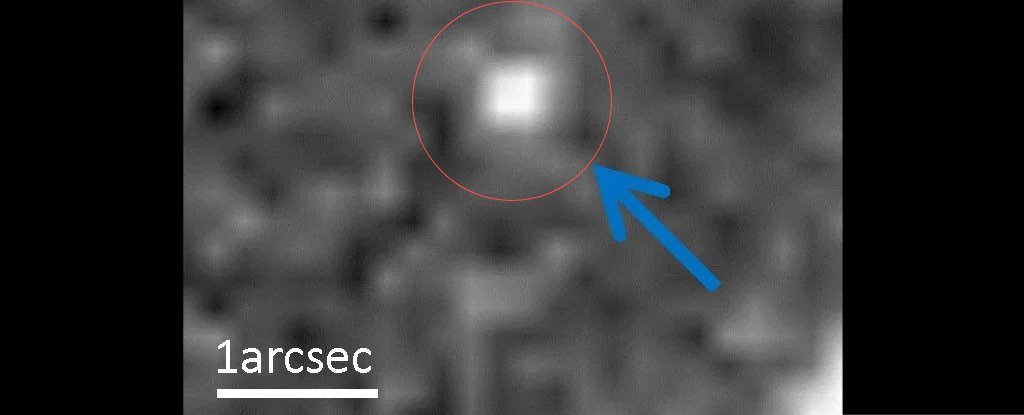
From time immemorial, philosophers and scholars have contemplated the beginning of time and even tried to determine when all things began. It was only in the age of modern astronomy that we came to answer this question with the right degree of certainty.
According to the most widely accepted cosmological models, the Universe began with Bang Bang about 13.8 billion years ago.
Even so, astronomers are still uncertain about what the early universe looked like, as this period coincided with the cosmic “Dark Ages.” Therefore, astronomers continue to push the boundaries of their instruments to see when the first galaxies formed.
Thanks to new research by an international team of astronomers, the oldest and most distant galaxy observed to date in our Universe (GN-z11) has been identified.
The team, whose research was recently published in the journal Nature Astronomy, was led by Linhua Jiang of the Kavli Institute for Astronomy and Astrophysics and Prof. Nobunari Kashikawa of the University of Tokyo.
They were joined by researchers from the Carnegie Institution for Science Observatories, the Steward Observatory, the Geneva Observatory, Peking University and the University of Tokyo.
Quite simply, the dark cosmic age began about 370 thousand years after the Big Bang and continued for another 1 billion years.
At this time, the only light sources were either the photons released before – which is still detectable today as the Cosmic Microwave Background (CMB) – and those released by neutral hydrogen atoms. The light of these photons is so changed due to the expansion of the Universe that they are invisible to us today.
This effect is known as “redshift”, where the wavelength of light is elongated (or “shifted” to the red end of the spectrum) as it passes through the ever-expanding cosmos on its way to us.
For objects approaching our galaxy, the effect is reversed, the wavelength shortens and shifts to the blue end of the spectrum (aka “Blueshift”).
For nearly a century, astronomers have used these effects to determine the distance of galaxies and the speed with which the universe expands. In this case, the research team used the Keck I telescope in Maunakea, Hawaii, to measure the redshift of the GN-z11 to determine its distance.
The results indicated that it is the most distant (and oldest) galaxy ever observed. As Kashikawa explained in a press release from the University of Tokyo:
“From previous studies, the GN-z11 galaxy appears to be the most distant galaxy detectable in our country, 13.4 billion light-years, or 134 billion kilometers (134 followed by 30 zeros). But measuring and verifying such a distance is no easy task. “
Specifically, the team examined the carbon emission lines from GN-z11, which were in the ultraviolet range when they left the galaxy and were moved by a factor of 10 – infrared (0.2 micrometers) – until arrived on Earth.
This level of redshift indicates that this galaxy existed as it was observed about 13.4 billion years ago – that is, only 400 million years after the Big Bang.
At this distance, GN-z11 is so far that it even defines the limit of the observable Universe itself! While this galaxy has been observed in the past (by Hubble), the resolving power and spectroscopic capabilities of the Keck Observatory were needed to make accurate measurements.
This was done as part of the Infrared Exploration Spectrograph (MOSFIRE) survey, which captured the transmission lines from GN-z11 in detail.
This allowed the team to produce distance estimates for this galaxy that were improved by a factor of 100 from any measurements that were made previously. Kashikawa said:
“The Hubble Space Telescope has detected the signature several times in the GN-z11 spectrum. However, even Hubble can’t solve the ultraviolet emission lines to the degree we needed. So we turned to a ground spectrograph more updated an emission line measuring instrument called the MOSFIRE, which is mounted on the Keck I telescope in Hawaii. “
If further observations can confirm the results of this latest study, then astronomers can say with certainty that GN-z11 is the most distant galaxy ever observed. By studying objects like this, astronomers hope to shed light on a period in cosmic history, when the universe was only a few hundred million years old.
This period coincides with the Universe beginning to emerge from the “Dark Ages”, when the first stars and galaxies formed and filled the early Universe with visible light.
By studying these, astronomers hope to learn more about how the large-scale structures of the universe later evolved. This will be assisted by next-generation telescopes, such as the James Webb Space Telescope (JWST) – scheduled to be launched on October 31, 2021.
These instruments will even allow astronomers to study the “Dark Ages” itself, at which point the only non-CMB light was the rotating line of neutral hydrogen – in the wavelength of distant microwaves (21 cm).
To be able to probe the very beginnings of the Universe itself and see how the first stars and galaxies form. What an interesting moment!
The observations that made this research possible were made during the time exchange program between the Keck Observatory and the Subaru Telescope on Maunakea, Hawaii.
This article was originally published by Universe Today. Read the original article.